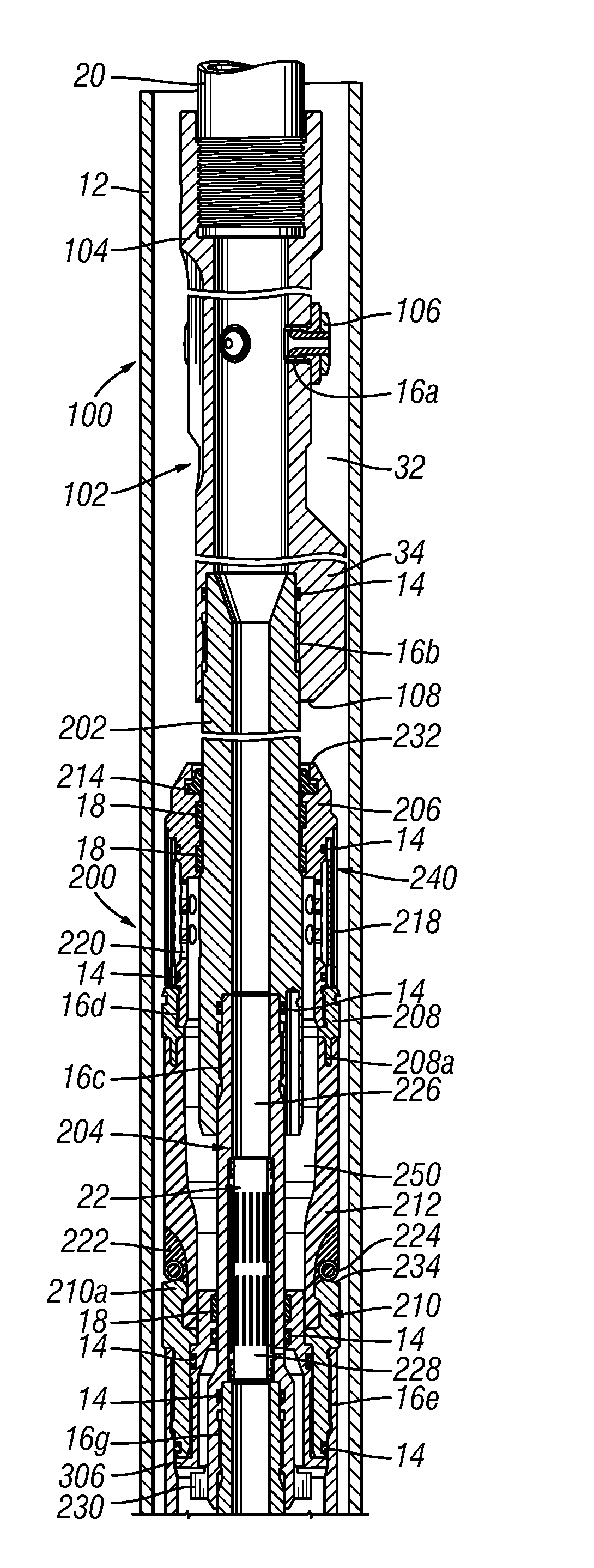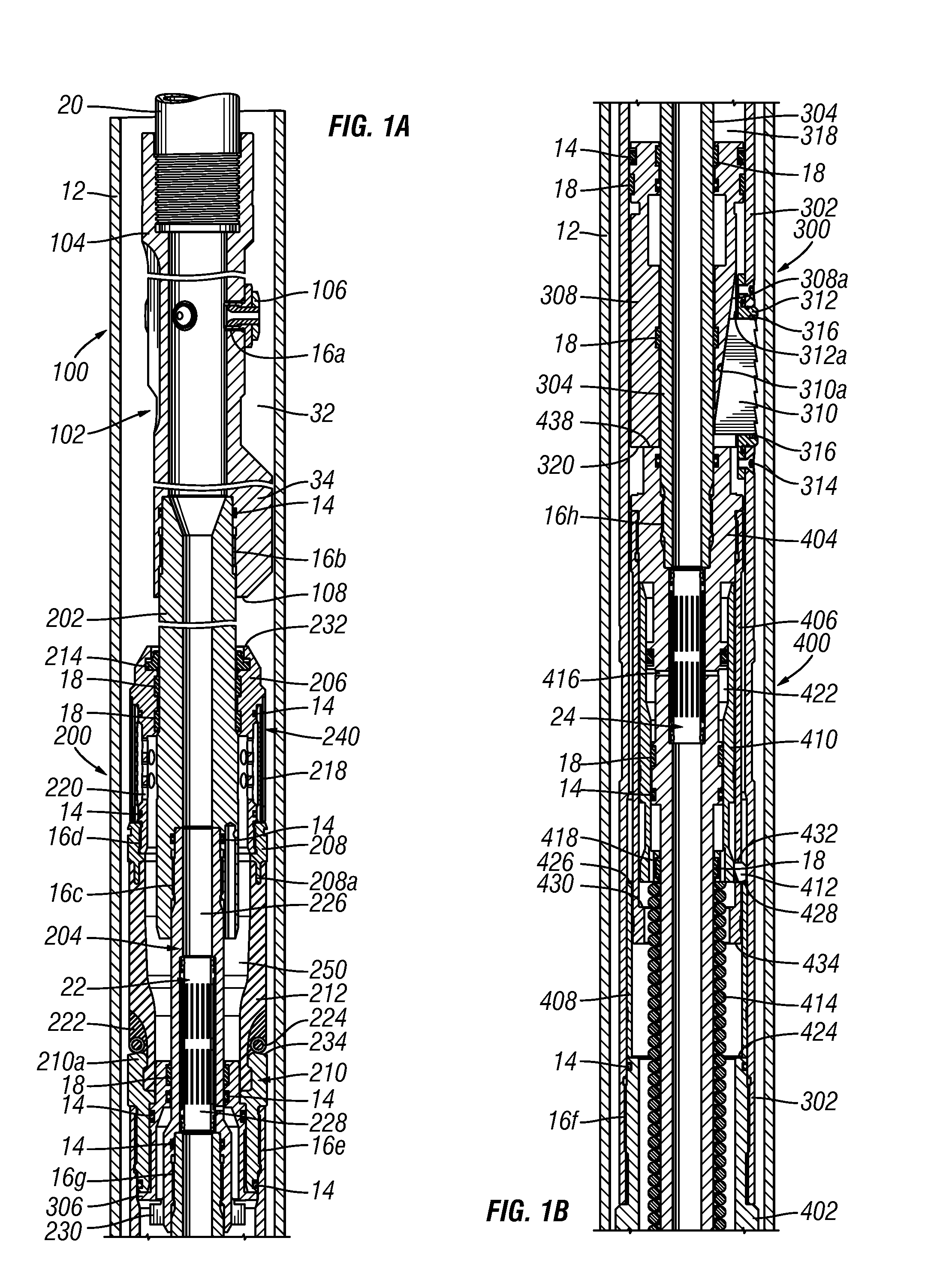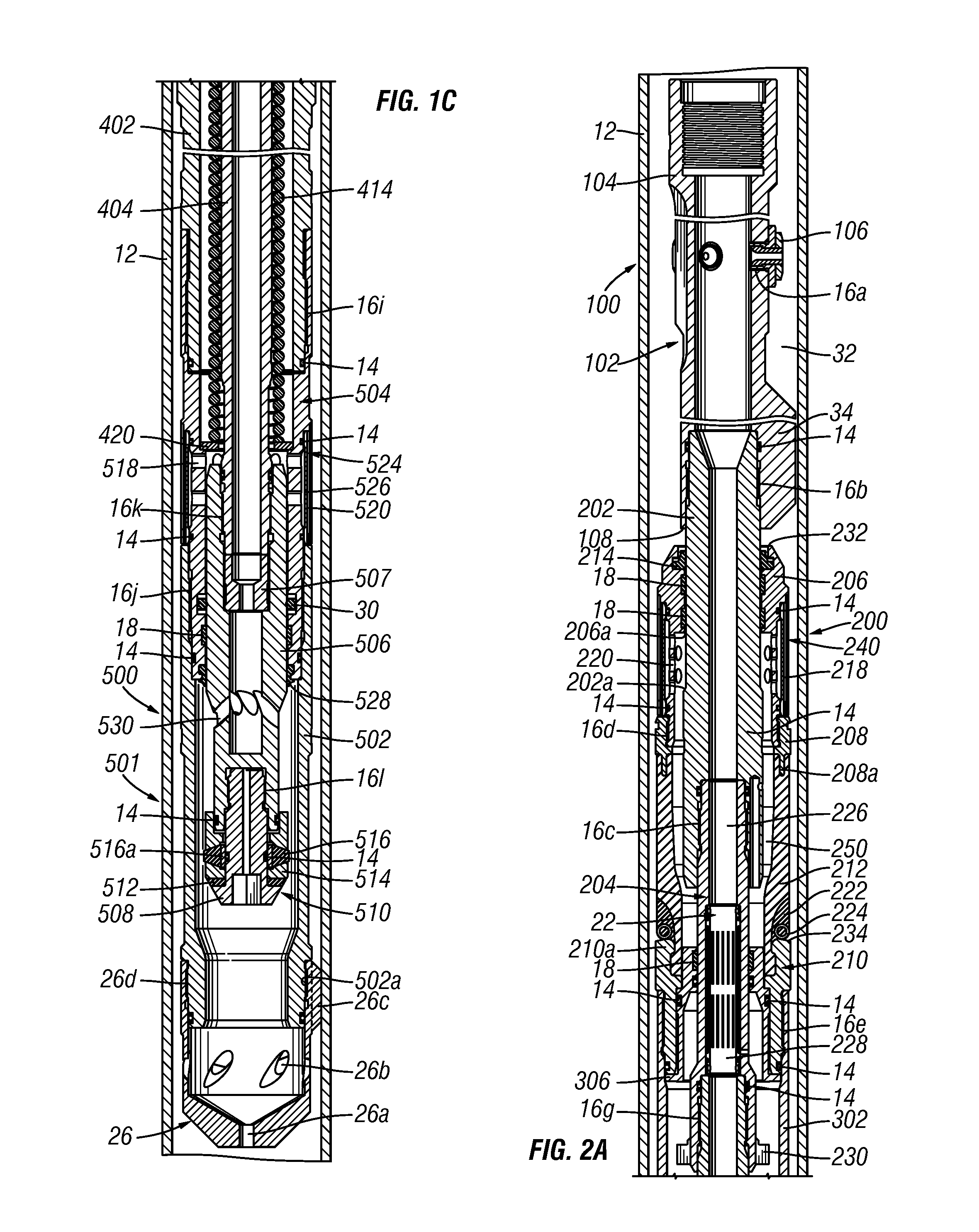One challenge of performing fracturing operations with
coiled tubing is due to the small clearances between the BHA and the casing.
Further, proppant used for fracturing may also lead to the BHA getting stuck within the
wellbore.
A stuck BHA poses significant problems to any perforating and fracturing operation because of the resulting
lost time and expensive specialized machinery and operating crews needed to retrieve the BHA.
Another challenge of performing fracturing operations with coiled tubing may be attributable to the relatively low strength of the coiled tubing.
Because only limited pulling forces are available through coiled tubing, it might not be possible to pull a stuck BHA out using coiled tubing.
Also the use of coiled tubing may present problems in setting the BHA within the wellbore.
However, coiled tubing cannot be used to transmit large axial forces, so such anchoring operations may be less effective if axial forces through the work string are required.
Conventional pressure set anchor systems are typically button type anchors, which may not adequately secure the BHA while properly centering the packing element, as discussed below.
One potential problem with the use of traditional
compression set packers in coiled tubing applications is that, when such packers are employed, there is a very small
radial clearance between the outside
diameter of the packer assembly and the inside
diameter of the casing.
The small
radial clearance can present problems when trying to remove the BHA as discussed in detail below.
The use of proppants and / or cross linked gels in the
fracturing fluid may increase the chance that the BHA becomes stuck in the wellbore due to the small clearances between the BHA and the casing.
In addition, the sealing elements in such
compression set packers do not readily return to their original shape or size, or do so at a
slow rate.
This further reduces the
radial clearance between the packer assembly and the casing.
The relatively small clearance required by squashable sealing elements makes them potentially problematic for coiled tubing fracturing applications, as the packer is more likely to become stuck in the well.
Additionally, squashable sealing elements generally require large forces to axially compress the sealing element to sealingly engage the casing.
Some strategies can be employed to enable the use of squashable set packers with coiled tubing; however, in some applications coiled tubing cannot be relied upon to generate the required forces to set the squashable sealing element.
Therefore, because of the small clearances and large axial forces generally required to set a squashable sealing element, squashable sealing elements may not be acceptable for use in various coiled tubing applications.
Although such
inflatable packers may have a relatively large clearance (e.g., 4″ ID casing, 3.125-3.5 OD packer), such
inflatable packers may suffer from other potential problems.
When this occurs, the packer may not return to its original shape and size when it is deflated, or it may take a longer time to return to its original size and shape.
Although penetration of sand, proppant or other solids is not a concern with this type of an
inflatable packer, a cord-type packer typically does not exhibit good
recovery of its original shape in all applications.
Complete
recovery of the inflatable elements of inflatable packers is a problem in general, particularly when such packers are subjected to repeated use under elevated temperatures and pressures typically experienced in a well.
Such lack of complete
recovery may increase the chances of the tool getting stuck in the well.
The rubber sealing element, after unsetting, retains a larger outer
diameter than it had prior to expansion, resulting in a greater chance that the BHA may become stuck in the casing.
This
waiting period reduces the overall productivity of perforating and fracturing operations.
During the fracturing process, the large pressure differential on the set packer exerts a large force on the set anchor assembly.
In general, any packer assembly of a coiled tubing BHA is subject to inherent weaknesses of the coiled tubing.
That is, coiled tubing cannot transmit large amounts of axial forces to the packer and anchor assembly, and cannot be used to rotate the BHA relative to the casing.
In addition, the number of instances coiled tubing can be used to transmit forces at a determined depth is limited due to its
low cycle fatigue life.
 Login to View More
Login to View More  Login to View More
Login to View More 


